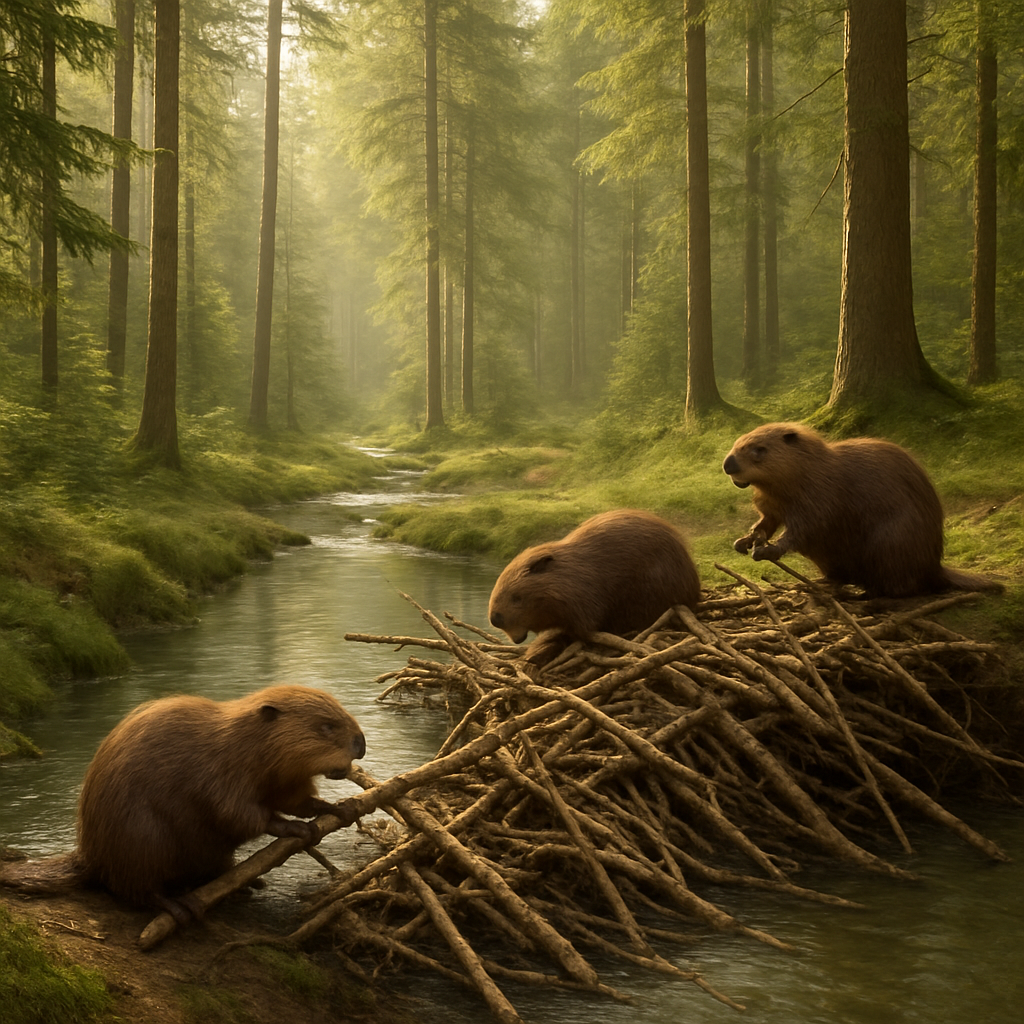
Picture this for a moment: You’re hiking through a dense forest, surrounded by towering trees and the gentle rustle of leaves. It’s not exactly the place you’d expect to find lessons on saving and investing, but maybe just maybe nature has more to say about your bank account than you’d think. Let’s explore how the natural world mirrors smart financial habits, sometimes in ways that are surprisingly straightforward.
Walking through nature isn’t just about the scenic views or the fresh air, though those are great perks. There’s a whole world of systems and cycles. There’s the squirrel diligently gathering nuts for winter, or the way trees grow slowly but steadily, with roots that spread deep and hold strong. Each of these natural patterns can teach us a lesson or two about money. Too abstract? Stick with me.
Squirrels and Savings
Ever watched a squirrel in action? It’s a flurry of energy, darting up and down trees, across lawns, tucking away acorns like its life depends on it. And, well, it kind of does. Squirrels don’t spend their days gathering nuts for fun; they’re prepping for the leaner months. They understand scarcity and plan accordingly, even if it’s just instinct.
In financial terms, setting aside some of your income like our furry friend does with acorns can be a game-changer. A good old-fashioned emergency fund is like your own stash of nuts, ready to support you when life throws a curveball. You know, like that unexpected car repair or the washing machine that decides to quit mid-cycle. According to a 2020 study by the Federal Reserve, nearly 40% of Americans would struggle to cover a $400 emergency expense. That’s a lot of folks caught without acorns, so to speak.
Growth and Patience
Let’s shift gears to trees. They grow slowly, adding rings each year. They’re not in a rush. They don’t abandon their roots to chase after the latest fad. This is a bit like investing. Real wealth doesn’t sprout overnight it’s more like watching a tree grow. You plant seeds (or dollars), nurture them, and give them time to mature. Whether it’s stocks, bonds, or real estate, patience is key.
Warren Buffett, that famous guy from Omaha with a knack for investing, often compares investing to planting a tree. He didn’t become one of the richest folks around by jumping at quick bucks; he planted seeds and waited. The magic of compound interest is like watching those tree rings build up, year after year. It starts slow, but over time, it’s something to behold. Albert Einstein, apparently, called compound interest the eighth wonder of the world. And who am I to argue with Einstein?
Diversification: The Forest’s Way
Imagine a forest where only one type of tree grows. Sounds kind of dull, right? Plus, if that tree species gets hit by disease, the whole forest could be in trouble. Nature, in its infinite wisdom, doesn’t put all its eggs in one basket. A healthy forest is diverse, with a variety of species that complement each other.
This is pretty much what financial experts mean when they talk about diversification. By spreading investments across different types of assets, you’re not overly reliant on one particular investment doing well. Stocks, bonds, real estate, maybe a smidge of gold the idea is to spread the risk. It’s like having a forest full of different trees, each with its strengths.
The Perils of Overconsumption
Now, let’s talk about overconsumption. It’s obvious in nature when resources are depleted faster than they can be replenished. Think about deforestation or overfishing there’s a clear limit to how much can be taken before systems start to collapse.
In personal finance, this translates to living beyond your means. It’s easy to get swept up in the latest trends those daily lattes or the slick new gadget that promises to simplify your life. But, if you’re constantly dipping into your savings or piling up credit card debt, it might be time to reassess. Financial sustainability, like environmental sustainability, requires a balanced approach.
Natural Disasters and Financial Resilience
Nature has its fair share of surprises. Hurricanes, earthquakes, and floods can strike with little warning. Financially, sudden expenses or job losses can be just as unpredictable. Building a safety net whether it’s an emergency fund or insurance is like preparing for natural disasters. It’s about resilience, being able to weather the storm, and coming out the other side intact.
Practical Steps and Real-Life Applications
You might be wondering, “Alright, how do I actually apply these nature-inspired insights to my finances?” Start with a few small changes. Set up an automatic transfer to a savings account each month, even if it’s just a small amount. Remember, squirrels don’t stash a whole tree’s worth of nuts in one day.
Look into compound interest calculators to see how your money could grow. It’s addictive in a way plug in different numbers and watch the magic unfold. Diversify by exploring different investment options. If you’re not sure where to begin, there are robo-advisors that can help design a portfolio based on your risk tolerance and goals.
And for those of us prone to overconsumption, maybe it’s time to take a leaf out of the minimalist handbook. Consider what brings real value to your life. Marie Kondo your finances, if you will. If it doesn’t spark joy (or financial growth), maybe it’s not worth your hard-earned cash.
The Unpredictability of Nature
Life, much like nature, is unpredictable. But that doesn’t mean leaving it all to chance. By learning from the world around us, we can adapt, prepare, and make smarter choices. Embrace the lessons of nature: save like a squirrel, invest with the patience of a tree, and diversify like a forest.
Maybe it’s not just me who finds these parallels fascinating. The idea that the world around us can guide us in such practical ways is comforting. So the next time you’re out on a hike, or even just sitting in a park, take a moment to observe. There’s a wealth of wisdom out there if you’re willing to see it.
And who knows, maybe there’s a squirrel watching you, wondering why you’re not gathering more acorns.

